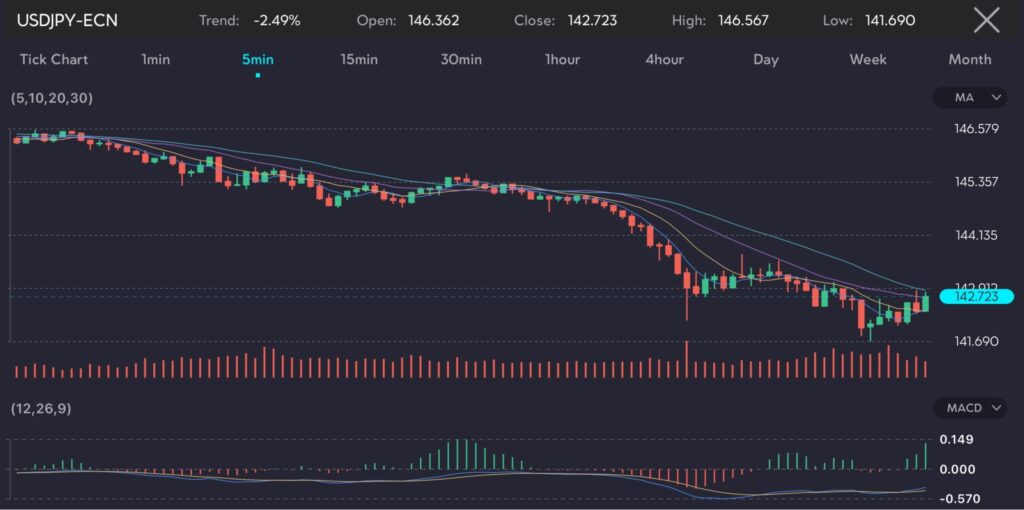Key Points:
- Market expectations of further BOJ rate hikes and aggressive Fed rate cuts drive the rise of the Japanese yen.
- BOJ recently raised its policy rate to 0.25% and indicated potential further hikes.
- Markets anticipate two more rate hikes by the BOJ this fiscal year, ending March 2025.
- Japanese authorities spent 5.53 trillion yen on currency intervention in July 2024.
The Japanese yen has strengthened significantly, its highest level since mid-January. This surge is driven by market speculation that the Bank of Japan (BOJ) will continue to raise interest rates in the coming months, contrasting with expectations that the US Federal Reserve will adopt a more aggressive rate-cutting approach.

Picture: The US dollar losing strength against the Japanese yen in the face of BOJ rate hike speculations, as observed on the VT Markets app.
Weak jobs report pressured the US Fed
The recent weak jobs report in the US has stoked fears of a potential recession. This has led markets to price in a larger 50 basis point rate cut by the Federal Reserve in September.
The anticipation of lower interest rates in the US has diminished the dollar’s appeal, making the yen more attractive.
A series of hawkish moves by the Bank of Japan
In contrast, the BOJ raised its policy rate to 0.25% last week and signaled its willingness to hike rates further if the economy remains robust. This hawkish stance by the BOJ has bolstered confidence in the yen.
Markets are now betting on two more rate increases by the BOJ within this fiscal year, which ends in March 2025, with the next hike expected in December.
Additionally, the BOJ announced plans to halve its monthly bond purchases over the next couple of years, further indicating a tightening monetary policy stance. This move is aimed at reducing the liquidity in the market, which typically supports a stronger currency.
Related article: What are government bonds?
In a notable move, Japanese authorities intervened in the currency market in July, spending 5.53 trillion yen to support the yen.
This intervention may reflect the government’s commitment to stabilising the currency and mitigating excessive volatility.
Risks and opportunities for the Japanese yen traders
The recent strength in the Japanese yen suggests potential for further appreciation, especially if the BOJ continues its hawkish stance. Monitoring upcoming economic data from both Japan and the US will be crucial in anticipating market movements.
Traders should also stay alert to any further interventions by Japanese authorities, as these could lead to sudden shifts in the trajectory of the Japanese yen.
Additionally, keeping an eye on the policy decisions from the Fed will be essential in assessing the relative strength of the US dollar against the Japanese yen.









